Ganz ohne Touristenfallen nach Bolivien reisen! Hier finden Sie eine Liste der Top 10 Sehenswürdigkeiten von Bolivien! Welche Highlights und Attraktionen dürfen Sie beim Urlaub in Bolivien auf keinen Fall versäumen?
Bolivien im Herzen Südamerikas ist das abgeschiedenste Land der westlichen Hemisphäre. Fantastische Mondlandschaften, unglaubliche alpine Regionen, der höchstgelegene See der Erde und eine faszinierende eingeborene Kultur versetzen jeden Besucher in Staunen.
Inhaltsverzeichnis
Titicaca See
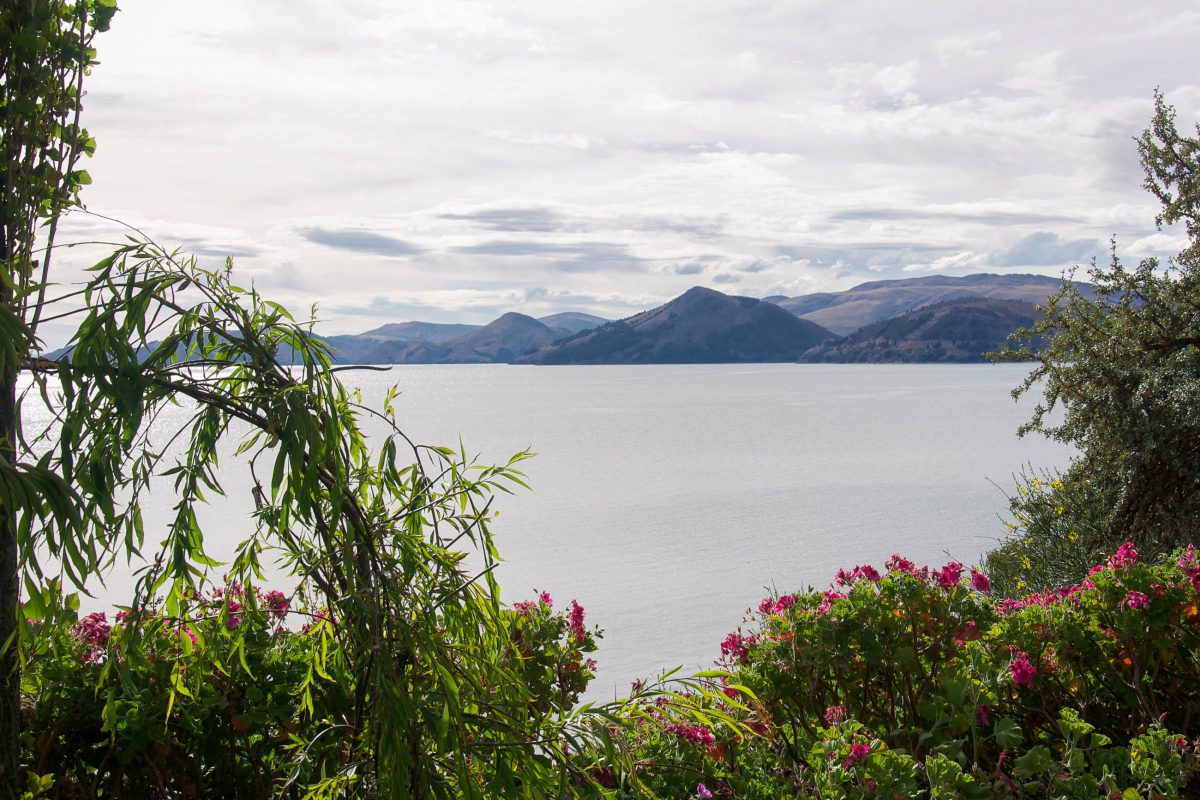
Der weltbekannte Lago Titicaca ist der höchstgelegene schiffbare See der Welt. Der zweitgrößte See Südamerikas erstreckt sich bis nach Peru und nennt einige sehenswerte Inseln sein eigen, auf denen es faszinierende Inka-Ruinen und urtümliche Kulturen zu entdecken gibt.
Artikel: Titicaca-See
Fotogalerie: Titicaca-See
Salar de Uyuni
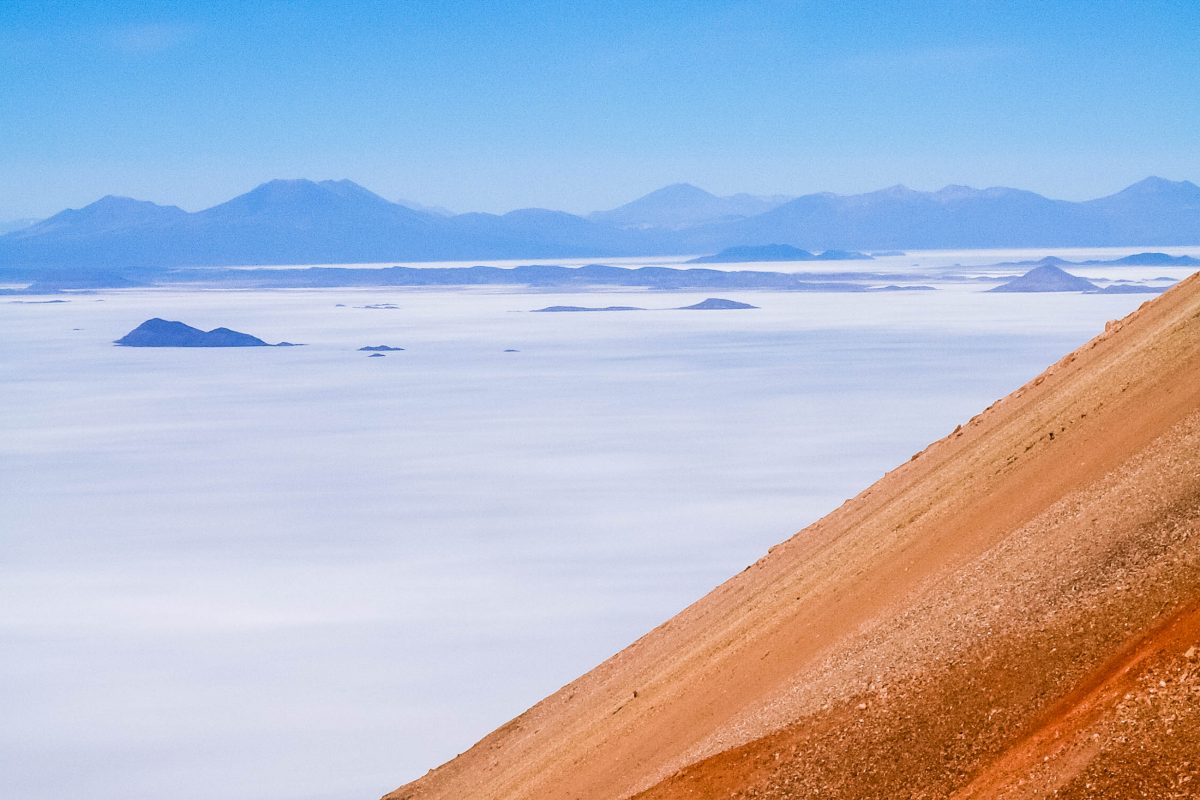
Ebenfalls einen Weltrekord hält der Salar de Uyuni. Mit einer Fläche von 12.000 Quadratkilometern ist er der größte Salzsee der Welt. Auf seiner meterdicken Salzkruste können sogar Busse und LKWs zu den beiden Inseln fahren, die von meterhohen Säulenkakteen bewachsen sind. Weitere Sehenswürdigkeiten am Salar de Uyuni sind der völlig frei zugängliche Eisenbahnfriedhof und der Palacio de Sal, ein Hotel gänzlich aus Salz.
Artikel: Salar de Uyuni
Fotogalerie: Salar de Uyuni
Ruinenstätte von Tiwanaku
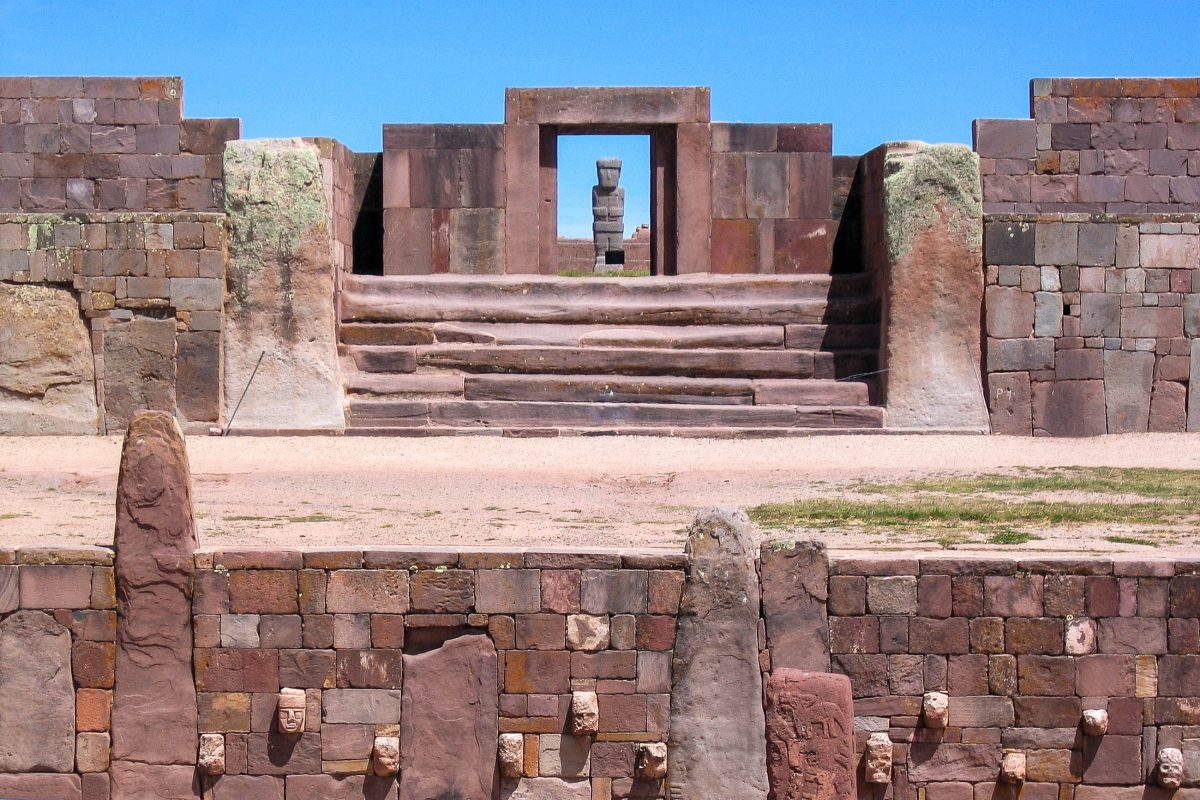
Tiwanaku wird oft als Machu Picchu Boliviens bezeichnet, es ist eine der bedeutendsten präkolumbianischen Stätten Südamerikas. Die mystische Kultstätte der Aymara liegt in den bolivianischen Anden auf rund 4.000 Metern Seehöhe und zählt zum Weltkulturerbe der UNESCO. Wie aus den tonnenschweren Steinblöcken Stufen, Tempel, Mauern und Tore erbaut wurden, ist der Wissenschaft bis heute ein Rätsel.
Artikel: Ruinenstätte Tiwanaku
Fotogalerie: Ruinenstätte Tiwanaku
Laguna Verde und Laguna Blanca
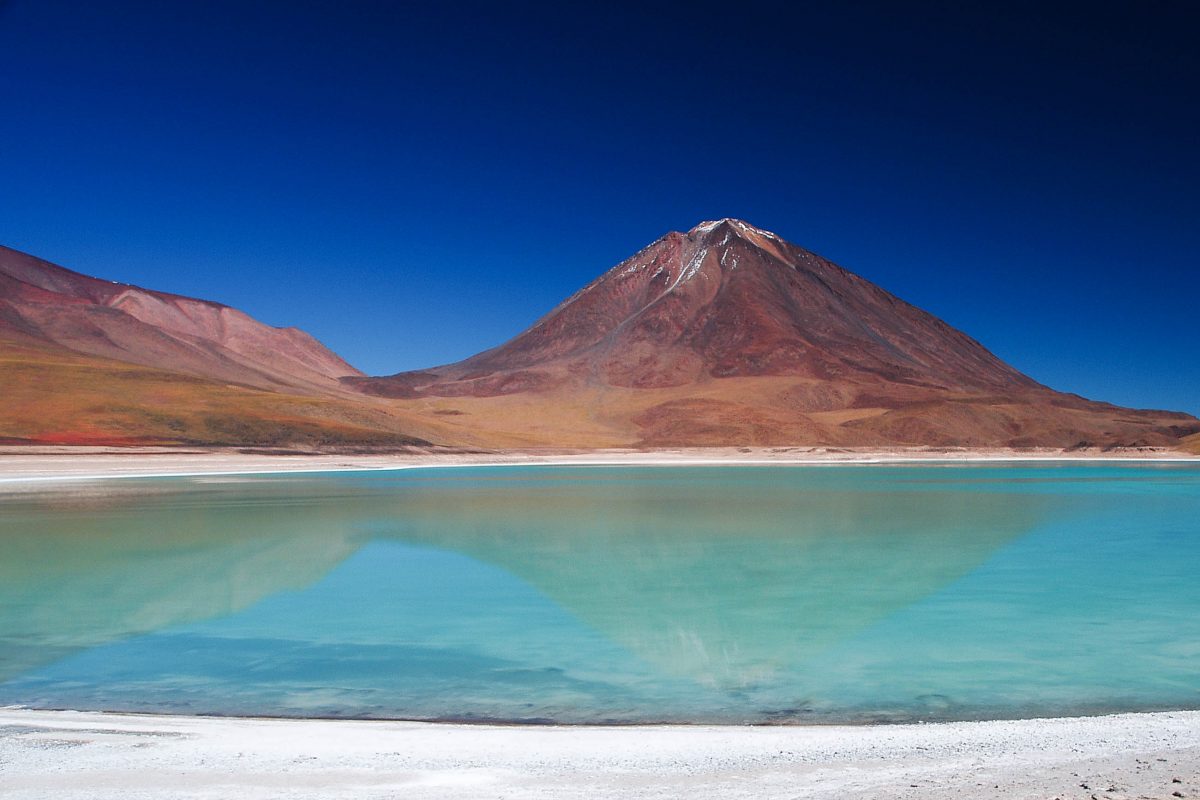
Die beiden farbenprächtigen Lagunen an der Grenze zu Chile machen ihrem Namen alle Ehre. Mineralien lassen das Wasser der Lagunen in sattem Grün und leuchtendem Weiß schimmern. Die Lagune Verde und Laguna Blanca formen damit äußerst fotogene Kontraste in der rotbraunen Wüste der bolivianischen Anden.
Artikel: Laguna Verde und Laguna Blanca
Geysirfeld Sol de Mañana

Sol de Mañana ist das höchstgelegene Geysirfeld der Welt. Es liegt ganz in der Nähe der von Flamingos bevölkerten Laguna Colorada und beeindruckt durch seine spektakuläre vulkanische Aktivität. Die brodelnden Lavaseen, heißen Quellen und bis zu 50m hohe Geysire präsentieren sich in der Morgensonne am schönsten.
Artikel: Geysire von Sol de Mañana
Fotogalerie: Geysire von Sol de Mañana
Cristo de la Concordia

Die gewaltige Christusstatue Cristo de la Concordia in Cochabamba ist die zweitgrößte Christusstatue der Welt. Mit ihrer Höhe von über 40 Metern übertrifft sie den weltberühmten Cristo Redentor von Rio de Janeiro um rund 10 Meter. Der Aufstieg zur Christusstatue erfolgt über 1399 Stufen und offenbart einen wunderbaren Blick über Cochabamba. An Sonntagen darf „El Cristo“ sogar betreten werden, denn hinter seinen Augen befindet sich eine weitere Aussichtsplattform.
Artikel: Christusstatue Cristo de la Concordia in Cochabamba
Fotogalerie: Christusstatue Cristo de la Concordia in Cochabamba
Copacabana
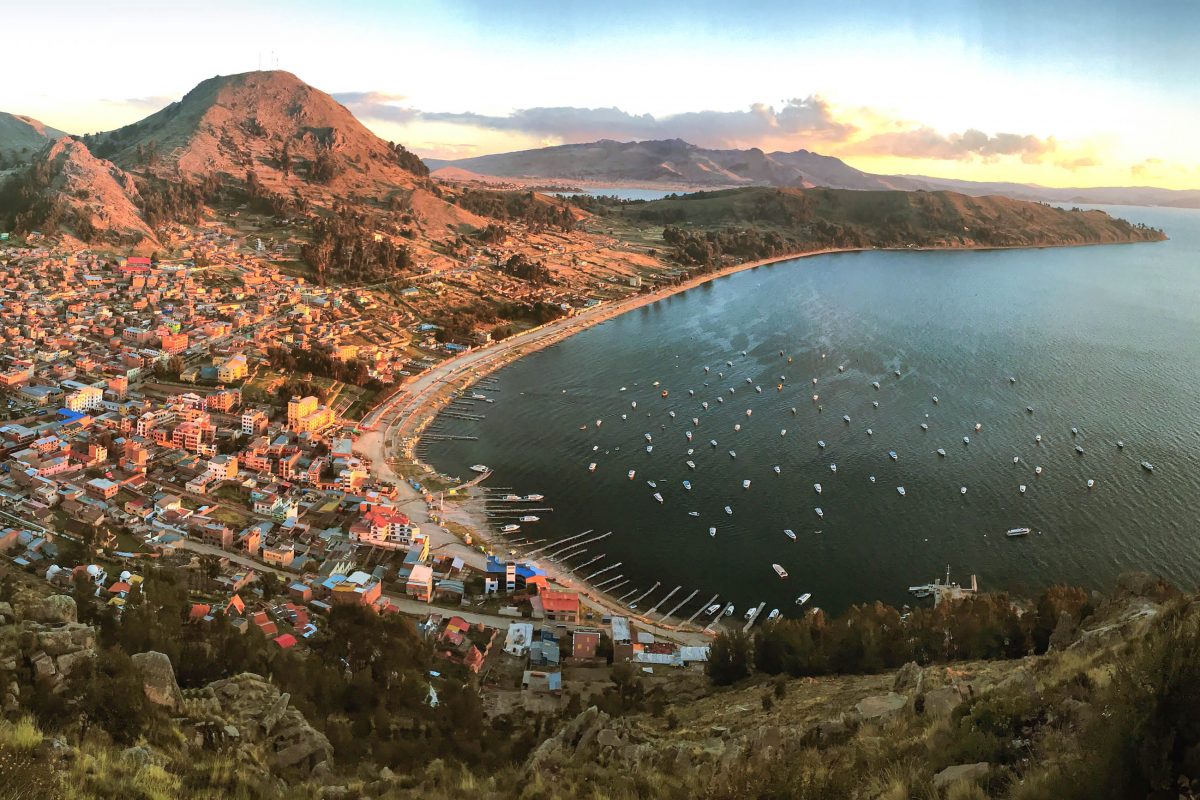
Apropos Rio de Janeiro: Am Ufer des berühmten Titicaca-See liegt das „echte“ Copacabana. Die Stadt zwischen dem Cerro Calvario und dem Cerro Sancollani war tatsächlich Namensgeber für Rios weltbekannten Strand. Copacabana ist Boliviens bedeutendster Wallfahrtsort und sein Strand ähnlich schön, allerdings kann man bei Jahreshöchsttemperaturen von 20°C kaum von Badewetter sprechen.
Artikel: Copacabana in Bolivien
Sucre – die Hauptstadt
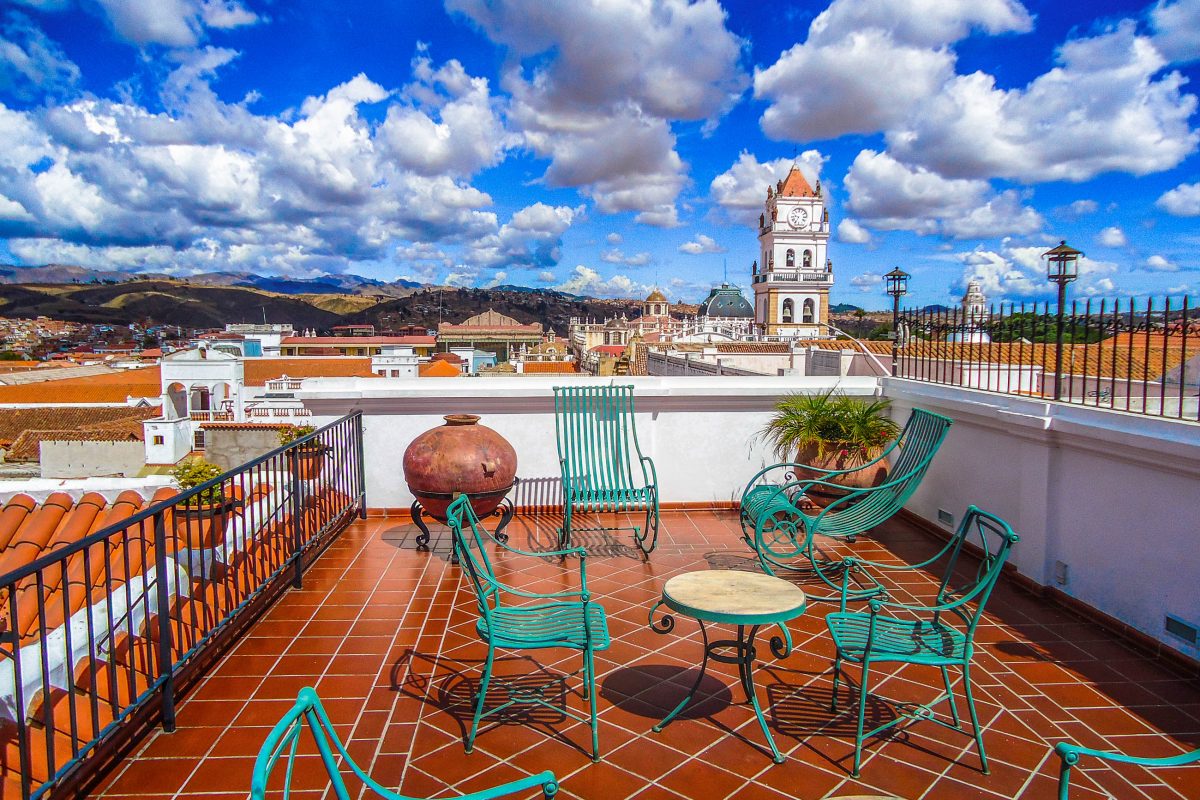
Boliviens Hauptstadt kann mit einer wunderbaren Altstadt aufwarten, deren prächtige Kolonialbauten von der UNESCO zum Weltkulturerbe ernannt wurden. Angenehmes Klima, viele Grünflächen und faszinierende Märkte machen einen Besuch von Sucre zu einem Muss im Bolivien-Urlaub.
Artikel: Altstadt von Sucre
Fotogalerie: Altstadt von Sucre
La Paz – Stadt in den Wolken
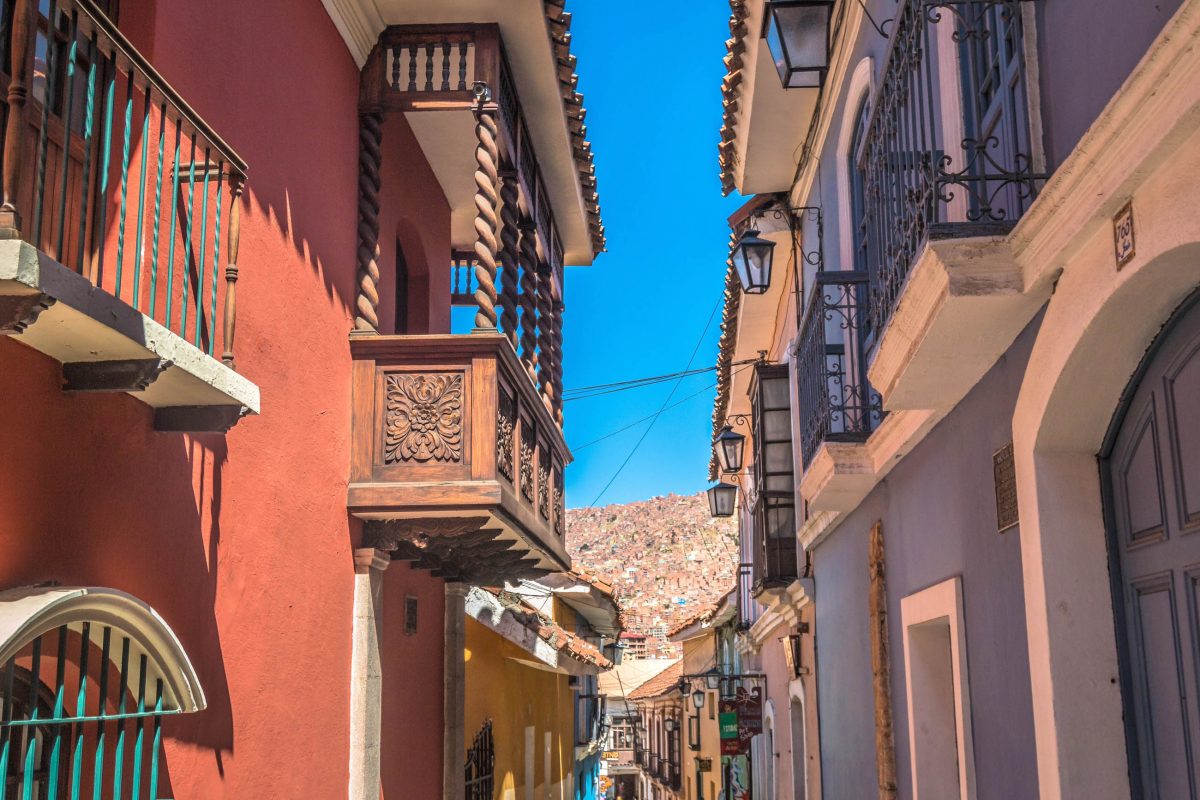
Obwohl Sucre Boliviens Hauptstadt ist, liegt der Regierungssitz des Landes mitten im Altiplano in La Paz. Damit beansprucht die „Stadt in den Wolken“ den weltweit höchstgelegen Regierungssitz für sich. Die Fülle an historischen Gebäuden, interessanten Museen und sehenswerten Ausflugszielen in seiner Umgebung machen La Paz zu einem attraktiven Basislager für Touren nach Tiwanaku, zum Titacaca-See oder zur gefährlichsten Straße der Welt.
Artikel: La Paz
Fotogalerie: La Paz
Potosí – Silberstadt

Im 17. Jahrhundert war Potosí die Schatzkammer der Spanier, denn hier wurde tonnenweise Silber abgebaut und vor Ort zu Münzen geprägt. Der damalige Reichtum bescherte der Stadt auf über 4.000 Metern Seehöhe weltweiten Ruhm und prächtige Gebäude. Heute zählt Potosí zum UNESCO Weltkulturerbe und zeigt noch immer das harte Leben der Minenarbeiter.
Artikel: Die Top 10 Sehenswürdigkeiten von Potosí
Fotogalerie: Potosí




